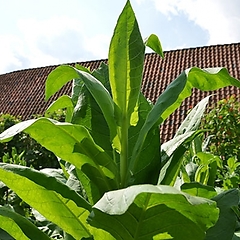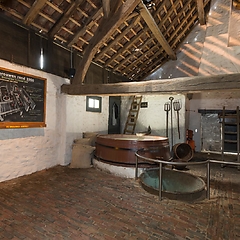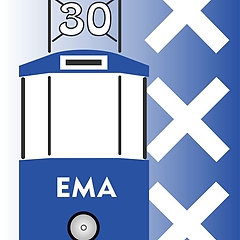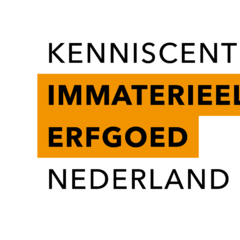Manual ringing with three bells from 1518, 1530 and 1985 from the Saint Nicolas Towerin Denekamp.
Ringing the bells in the Saint Nicolas Tower is a (continuous) tradition, which is originated in the first half of the 16th century. The large Salvator bell (1530) is hereby sounded, while the Saint Nicolas bell (1518) and Maria bell (1985), which hang silently, are struck with the clapper (clapped). This ensemble creates a four-quarter rhythm in the repeating tones e-d-e-c. The loudspeakers are below in the tower, while the bells are located on the first tower floor, directly under the bell attic.
There is a celebration around Christmas, New Year's Eve, Easter, King's Day, Pentecost, Entry Saint Nicolas, and Saint Nicolaas Name Day on 5 and 6 December. Furthermore on other special occasions.
Our ringing group (Stichting Beieraars Sint Nicolaastoren Denekamp) currently consists of 14 members. In 2018 there were 2 new registrations. The players are people who practice different professions in daily life. The age is predominantly between 40 and 50. What binds them all is the love for this special tradition and the passing on of it. from the last and grandest bell, the Salvator from 1530 (approx. 2000 kg), from the Münsterse bell founder Wolter Westerhues. In 1518 he also cast the Saint Nicholas Bell, which in 2018 thus celebrates its 500-year anniversary, which has also received the necessary attention. The Maria bell is a replacement for the bell of the same name from the year 1436. This bell tore in 1975 and is set down in the tower. In addition, Denekamp is, as far as known, the only place in the Netherlands that has two Westerhues bells. The following text can be sung on the tones of the bells (e-d-e-c): "Nen mengel beer, gebroaden hoon, dat koomp den groaf van Beanthem too" (dialect). It can be concluded from this that the then owner of the Singraven estate, Count Everwijn II of Bentheim, located near Denekamp, would have made a substantial contribution to the casting of the two 16th century Westerhues bells.
On the initiative of the people who ring the bells, the following has been realized over the years:
- - The construction and placement of a historic wooden oak belfry in the belfry.
- - Setting up and maintaining a permanent overview exhibition of tower and bells on the first tower floor.
- - The placement in 2018 of a tower clock dating from 1920 in the exhibition room, serving as a demonstration and educational purposes during guided tours.
Furthermore:
- - The publication of a brochure about the history of the tower and bells.
- - The release of a CD about the Denekamp bells.
- - In 2011, the players received the Jhr. Jacob van Eyck Prize awarded "for their extraordinary achievements in the field of campanology in the Netherlands and Flanders". This prize was set by the Utrecht Bell Players Guild (UKG).



